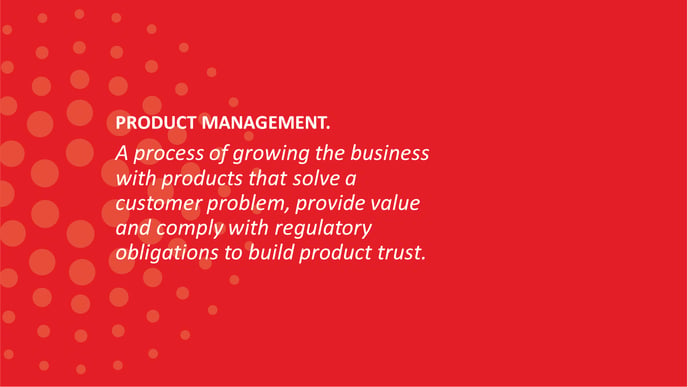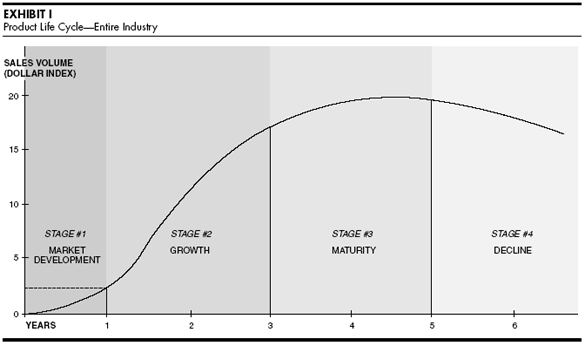What is product management? Here we share a new purpose statement for product leaders and list out what excellence looks like.
What is product management? Here we share a new purpose statement for product leaders and what excellence looks like.
Organisations create and manage their products and services as a knowledge management function called ‘product lifecycle management’. The purpose and value of the role is about finding growth, improving product experience, doing that cost effectively and managing compliance and trust. The goal is to align the organisation around a product strategy to turn a commercial opportunity into a business outcome.
So how does this translate to a pragmatic definition that a product leader can use as an elevator pitch of their role and value.
In times of market volatility product leaders need a broader focus than growth and customer engagement. So as we face challenging market conditions we have cast a new purpose statement for product leaders to help navigate the current complex external factors and market volatility and be proactive and focussed in a remote working context.
Product management purpose statement
Product management is a process of growing the business with products that solve a customer problem, provide value, and comply with regulatory obligations to build customer trust.

The goal is a successful and growing business and we have outlined the focus of product lifecycle management and governance across five domains.
Domain : Finding Growth
Domain: Improving Product Experience
Domain: Cost Effectiveness
Domain: Collaborate with and lead your virtual team
Domain: Build customer trust
Summary of the success areas:
1. Finding Growth

Setting a growth strategy in new and existing products. This includes setting product strategy, creating a product design, frequently monitoring, assessing and re-evaluating - by default weekly monthly and quarterly.
2. Improving Product Experience

Designing, then monitoring and improving the product experience - end-to-end to remove customer friction.
3. Doing this cost-effectively

Product revenue and margin enhancement and monitoring your operational costs for profitable growth and great investment decisions.
4. Collaborate with and lead your virtual team

Create a product virtual team so you can work anywhere, at anytime and remove internal silos. Product management is most effective when you report, engage, align with other teams in your organisation.
5. Building customer trust

Build customer trust in your product by setting a target market, frequently monitoring and meeting product legal and regulatory obligations and assessing non-financial risk.
6. Adopting Tech to get your mojo back

Product leaders champion a product strategy story across an organisation and using digital tools helps you save time, be more productive and get your influence for key decisions.
How has product lifecycle management evolved?
The 1960s was a pivotal decade marked by the civil rights movement, the Vietnam War and the moon landing. The Beatles released Love Me Do, and movies like Psycho and To Kill A Mockingbird played in the cinemas. People enjoyed fondue and shrimp cocktails, and memorable inventions include cassettes, the computer mouse, and Etch A Sketch. It was also during the '60s when Harvard's Theodore Levitt created the product life cycle framework. He talked about nylon as a product reaching maturity - but using his framework it was repurposed into other products, extending its life and value over and over again. A game-changer for revenue - ka-ching!

Levitt's framework has had a few makeovers, growing from 4 steps to 5, then 6. Even I remember studying it when I was at uni in 2006! Business has evolved since the '60s and this old-school Product Life Cycle framework is no longer a good fit for modern organisations operating in an ever-changing technology-driven landscape. Monitoring financial metrics alone is risky... So what do we do? Add on a few more steps to the lifecycle? Scrap it and start again? Or maybe reinvent it, keeping some of the fundamentals but adapting it to the 21st century to better suit modern Product Managers - and consumers of the future. Regulation is a hot topic and it doesn't factor into Levitt's current framework... we can't be surprised, it was the '60's - cigarettes were still heavily advertised!
Technology has changed the way we live, and a framework from 1962 doesn't work in this new ecosystem. We need to reassess the way we operate to ensure a product is successful in domains other than revenue alone. Products need continuous reviewing to ensure ongoing success. Skyjed's product lifecycle and governance framework and 360-degree product workspace has reinvented the product life cycle. It measures not 1 - but 5 domains of product health
Why use the 5 Domains of Product health?
.png?width=688&name=Frame%2059%20(1).png)
Levitt focused on revenue only, and in 2020 it's simply not going to cut it. Regulation and product governance are hot topics and they're not going away. After-all, what is good revenue if you're not ticking boxes for regulatory compliance, product innovation, customer experience and value?
How to implement a simple product management and governance process to get started
So what are the must-have processes to adopt in your team to stand out as a Superstar product leader.
Take these 7 quick steps to find product success.
- Create a virtual team and lean-on your experts from design, legal, finance, marketing and risk.
- Set product strategy, product design and a growth plan, consistently engage and report-out on target market requirements.
- Complete a consistent annual rolling product schedule - by default weekly, monthly and quarterly.
- Set product triggers - to watch over your monitoring and get alerted when you hit a trigger point. It means you need to review.
- Monitor & review a 360-degree view of product health - market, competitors, product experience, financials, regulatory and innovation. Set initial review and ongoing annual review.
- Set improvement plans and assign them to be great at execution and stronger, faster product growth decisions. Action plans can be about growth strategy or risk mitigation.
- Engage and report to your virtual and remote working product team, across the company and to board members to champion your product vision and growth plan: and compliance.
